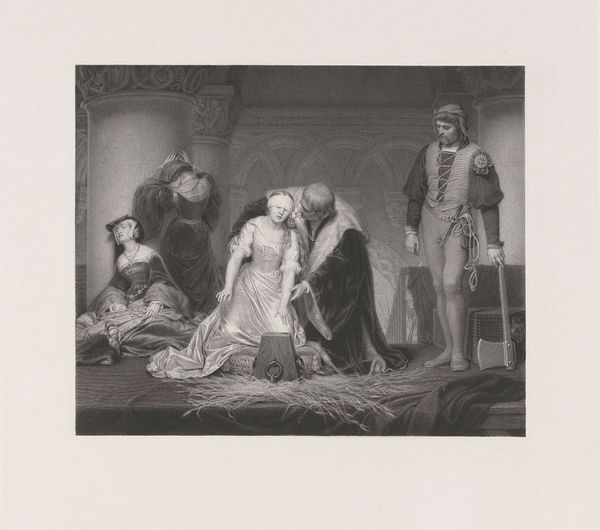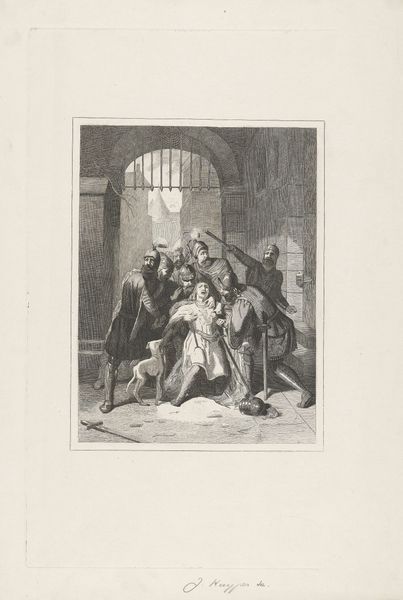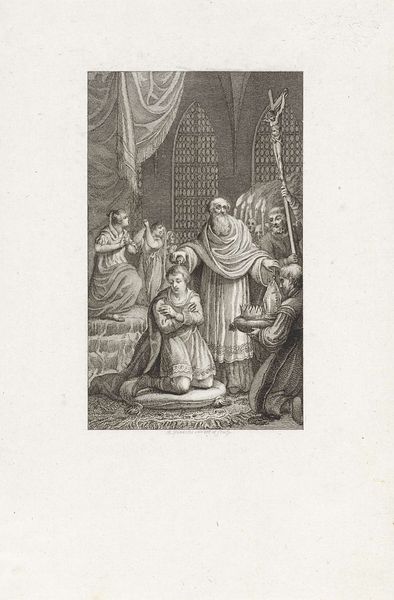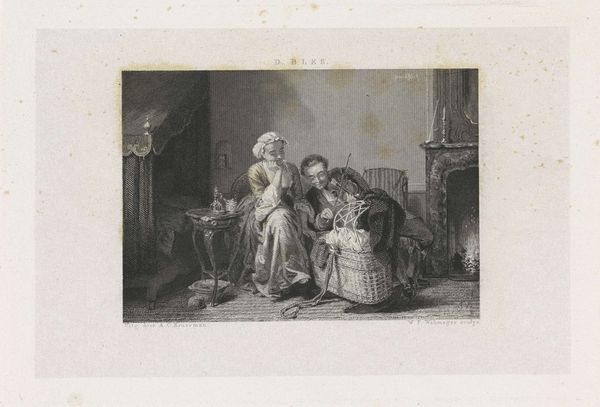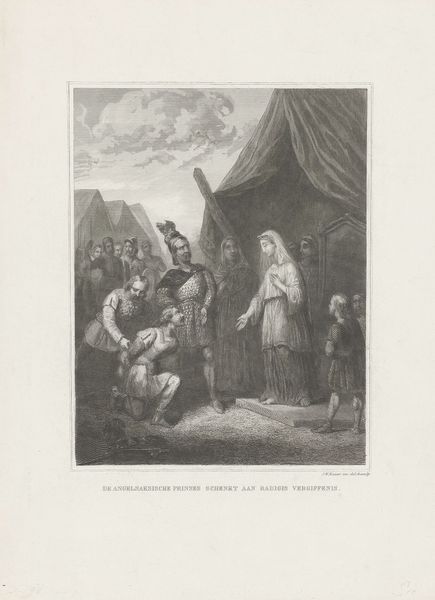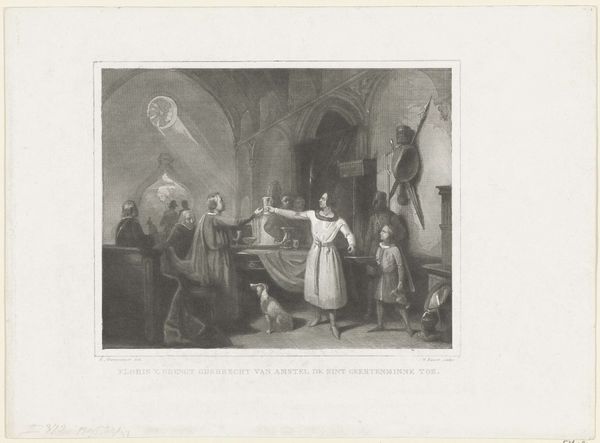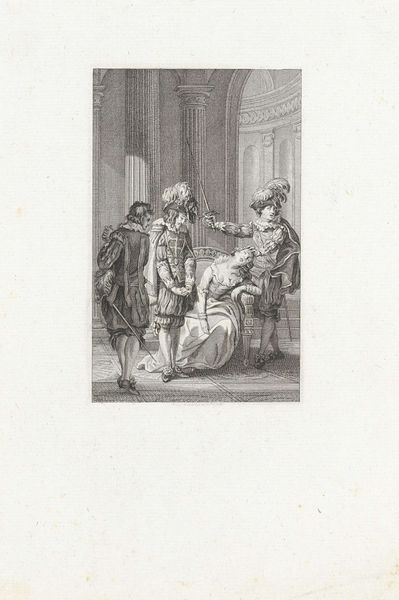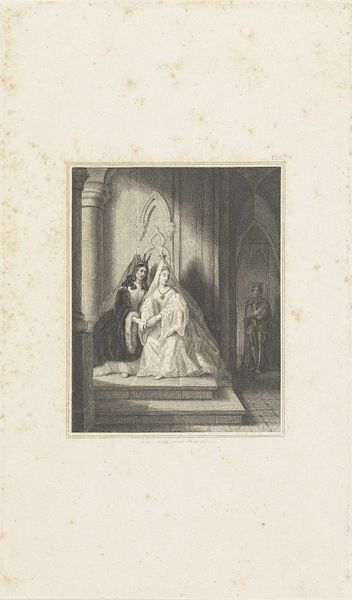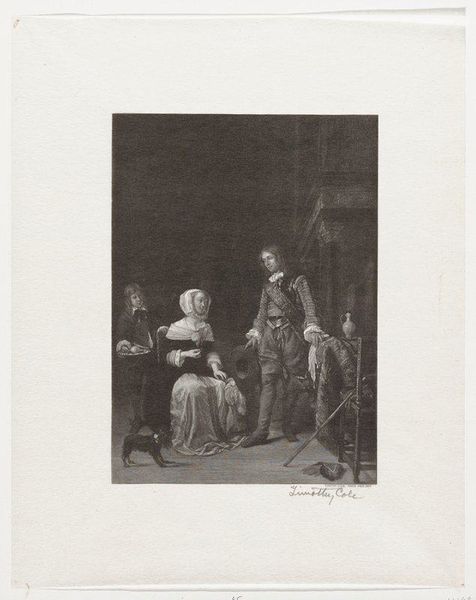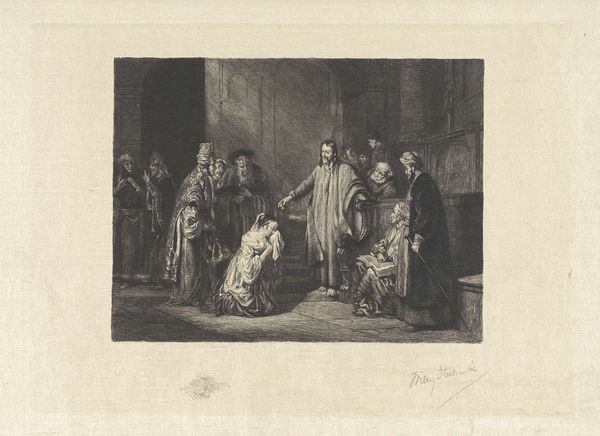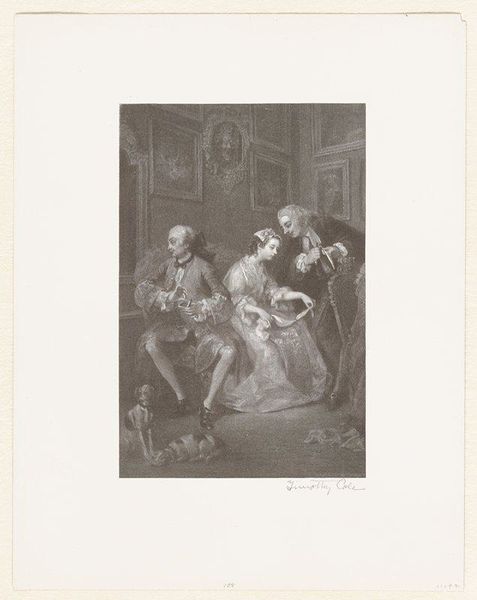
Dimensions: height 126 mm, width 177 mm
Copyright: Rijks Museum: Open Domain
Curator: This is "The Execution of Lady Jane Grey," an engraving created between 1833 and 1886, after a painting by Paul Delaroche. You can find this print housed here at the Rijksmuseum. Editor: The scene feels so heavy, oppressive. The tonal range, almost entirely in shades of gray, seems to drain all hope. And that staging! It amplifies the cold, stone architecture and the finality of the event. Curator: The romantic style focuses intently on high drama, portraying a potent narrative filled with deep-seated human emotion and pathos. The arrangement of figures channels the viewer's attention right to Lady Jane. Editor: And what of that composition? The sharp angles of the executioner’s axe, counterposed with the roundness of Lady Jane's covered face create a tense, visual dichotomy between power and submission. The stark tonal contrast serves to isolate Lady Jane and focus our attention on the unfolding tragedy. Curator: Indeed. This historical drama resonated strongly in 19th-century Europe, evoking potent associations of wrongful execution and injustice. It encapsulates not only a historical moment but also enduring human themes. Notice the recurring motifs like blindness - both literal and metaphorical - symbolizing an inability or refusal to ‘see’. Editor: Interesting you mention that visual ‘blindness.’ The sharp geometries of the architectural features contrast severely against the softness implied in Jane’s blindfold and the straw scattered around her. The cold steeliness of the axe is an ominous threat, contrasting against Jane’s vulnerability. Curator: Absolutely, it's all carefully structured to evoke that contrast. The very staging speaks to a deliberate attempt to remind people of inherent authority and perhaps critique of its misuse, as we see her led to the block by unseen powers. The figures surrounding her contribute to this layered understanding as well; from her attendants weeping, to the stark focus of the executioner. It’s charged, and fraught. Editor: Yes, by focusing the composition to build that charged, wrought moment you mention, we see her execution transcend mere history. The artist creates a resonant visual examination of vulnerability, the abuse of power, and human failing, encapsulated in monochromatic simplicity. Curator: Well, I for one appreciate the opportunity to reflect upon our history, with its recurring motifs playing out time and again on a continuous loop, even today. Editor: And for my part, I am again struck by the powerful, timeless impact of visual form. It certainly amplifies what can be interpreted when exploring history, culture, and human emotion in artistic visual format.
Comments
No comments
Be the first to comment and join the conversation on the ultimate creative platform.
